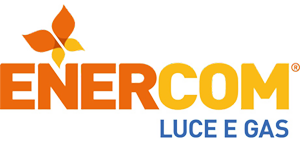Hypermeteo services
Innovative style and pioneering spirit characterise Hypermeteo’s highly representative weather data on the market.
A wide range of services and solutions to meet the challenges of new scenarios and markets.
Hypermeteo designs, develops, produces, processes, and markets innovative datasets and services in the fields of meteorology, climatology, and risk analysis, always setting our sights on new horizons and goals.
Historical reanalysis data
“Reanalysis data”, “historical data” or “final data” means the set of past meteorological parameters reconstructed through the reanalysis method. Hypermeteo’s historical data covers a timeframe of more than 30 years, since 1990.
This dataset is the matrix of a number of processing operations: the calculation of the time of recurrence of extreme events, the calculation of the frequency of occurrence of adverse weather events in certain periods, the calculation of the probability of exceeding thresholds (e.g. for late frosts).
Near-real-time data
This type of data is the most representative of the current meteorological situation. It includes daily, hourly, or sub-hourly data (e.g. with an update frequency of 15 minutes). Near-real-time weather data is provided by means of a continuous feed, which makes it possible to thoroughly monitor the evolution of meteorological variables. Continuity of the historical series over time is guaranteed by constantly updating the historical dataset with the most recent data.
Nowcasting data
Nowcasting forecasts involve all the main meteorological parameters – precipitation, temperature, solar radiation, cloud cover, wind – and are characterised by a high update frequency (up to 5 minutes) that is variable and customisable depending on the parameter of interest.
In the 3-6 hour time window, this type of processing is much more reliable and offers better performance than traditional weather forecasts.
Forecast data
The set of meteorological parameters processed by an atmospheric simulation model used in forecasting mode (multimodel ensemble). The model simulates short-term (up to 3 days) and medium- to long-term (3 to 15 days) future trends of different meteorological variables starting from a weather condition.
Climate Scenarios
This analysis process, by taking advantage of a high observational density and analysis techniques, uses data from long-term climate projection models, downscaling and statistical correction procedures, with the aim of defining possible scenarios of expected impact on specific areas. Future climate trends processed by Hypermeteo represent a forecasting opportunity for those industries that need to define and adopt new climate change adaptation policies.
Providing data via Web service API
Hypermeteo provides representative weather data for integration into third-party decision support systems or GIS platforms that use the weather data as an input for further analysis or as a layer to be superimposed on other information.
Weather datasets are laid out on digital grids, while grid nodes represent the geo-referenced points used to process the meteorological analysis. In a geographical area with adequate observational coverage (on-site networks, radars, satellites), each individual grid point can be considered a virtual weather station, capable of generating a highly accurate data stream equivalent to a physical weather station.
The organisation of weather and climate data in spatially and temporally ordered datasets, and its transmissibility, is facilitated by API-Webservice technologies which, through the OGC (Open Geospatial Consortium), WMS, WFS, WCS, and API Custom protocols (implemented by Hypermeteo), return weather data on three-dimensional grids (time, latitude, longitude), two-dimensional grids (latitude, longitude), vectors (e.g. station data and lightning), and time series for specific geographical locations.
The API-Websevice system makes it possible to manage data provision more efficiently and sustainably, because it is able to process and provide only the weather information needed for specific applications.
Push Notifications
The system of alerts and push notifications (via API) is able to report, on any app, platform, or service, the adverse weather events expected at certain points or geographical areas, even based on the location of the user or geolocalisable devices.
The function of notifications, the message sending logic, as well as the type of data (historical, real-time, or forecast), events (e.g. snow, thunderstorm, heavy rain, wind, etc.), and alert thresholds, are entirely designed and customised according to the purpose of the application and the end user.
Early Warning
A system of forecast alerts with a high degree of spatial-temporal detail upon the occurrence of severe weather events, on geographical areas of interest, for the following hours or days. The forecast data is correlated with historical measurements and statistical analyses of the times of recurrence of weather events, in order to provide the user with complete meteorological monitoring of the area in question.
With Early Warning it is possible to define alert thresholds for any event of interest, making it possible to identify potential criticalities for specific activities in the forecast phase.
The information is customised according to requests, sent as alert messages and displayed on interactive maps.
An indispensable tool for organisations that need to identify events that have a significant impact on the operation and use of infrastructures (e.g. utilities, land reclamation authorities, electric grid operators, wind farms, etc.).
Weather and climate risk indexes
With a historical depth of over 30 years, the Hypermeteo dataset is representative of the actual probability distribution of meteorological events, making it possible to measure the frequency with which a given atmospheric event has occurred in the past and to estimate expected future occurrences.
The data is distributed on high-resolution digital grids so that it is possible to analyse the event at the maximum extent and depth in the area of interest, be it regional, national, or global.
Data scientists and analysts determine the geographic risk indicators for the main adverse events. In the calculation process, criteria for assessing the probability and severity of damage are defined in order to calibrate and improve the indicator characteristics.
Climate Sentinel®
For organisations and companies that, in defining new climate change adaptation policies, need to know the long-term outlook, Climate Sentinel® is able to provide expected future atmospheric impact scenarios.
An advanced climate projection system, consisting of the Coupled Model Intercomparison Project – CMIP5 and downscaling and statistical correction procedures, that can process detailed and accurate information on specific areas of interest. In addition to the data regarding the primary layers (e.g. temperature, wind, precipitation), all the parameters necessary to define the impacts for each specific sector are also provided.
Data Analytics
The flow of meteorological data, consisting of continuous real-time data updates and forecast outputs, feeds Hypermeteo’s unique repository of historical datasets dating back to over 30 years.
Data Analytics support is designed for organisations wishing to integrate weather and climate datasets with other types of data. A tool to generate added value in the provision of data and in the integration, analysis, and interpretation of the data itself, to maximise the results of their implementation.
AgroCast®
In agronomic activities, and in particular in precision agriculture, the availability of reliable and consistent meteorological data makes it possible to optimise choices, actions, and results, applying modular and proportionate responses to specific situations, with benefits in terms of effectiveness, resource savings, and environmental impact.
For the sector of smart agriculture, AgroCast® software processes detailed and representative weather and climate data that can be integrated in decision support systems, making agricultural practices more efficient and sustainable. A high level of spatial-temporal accuracy has been achieved thanks to the use of next-generation sensors, the most advanced scientific methodologies, and retrospective analysis (reanalysis), thanks to a wealth of weather data with a historical depth of over 30 years.
Clear, precise and scientifically based meteorological information featuring probative means of evidence in agriculture risk management.
Hypermeteo’s customers




Some of our customers





















Previous
Next